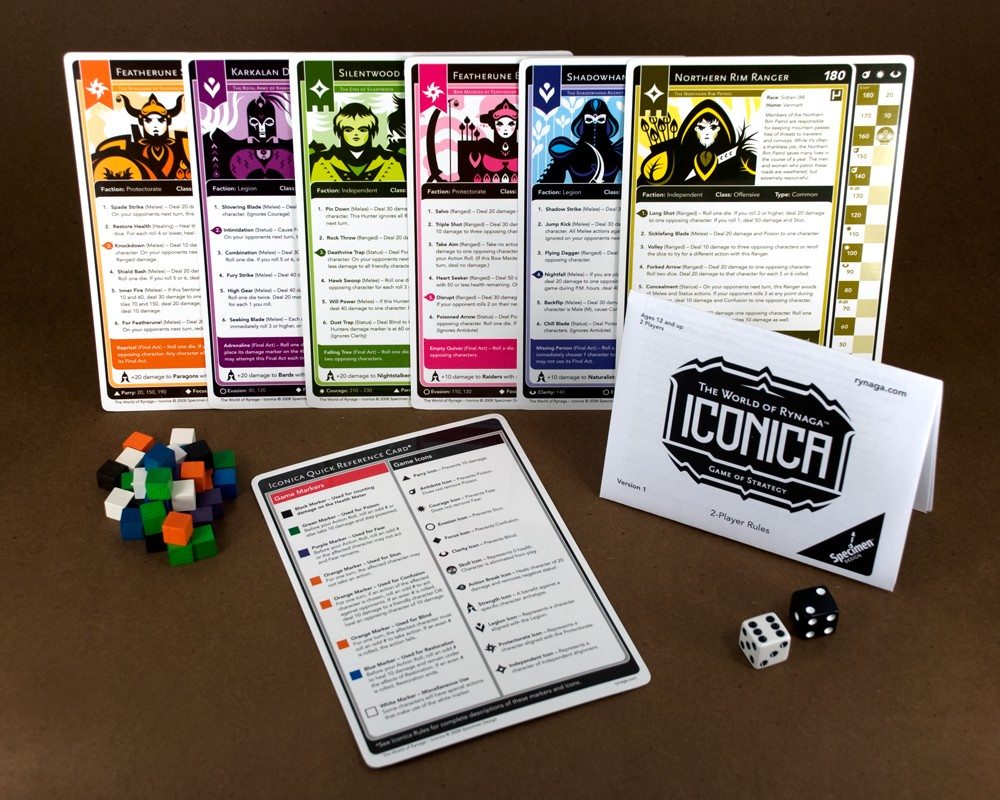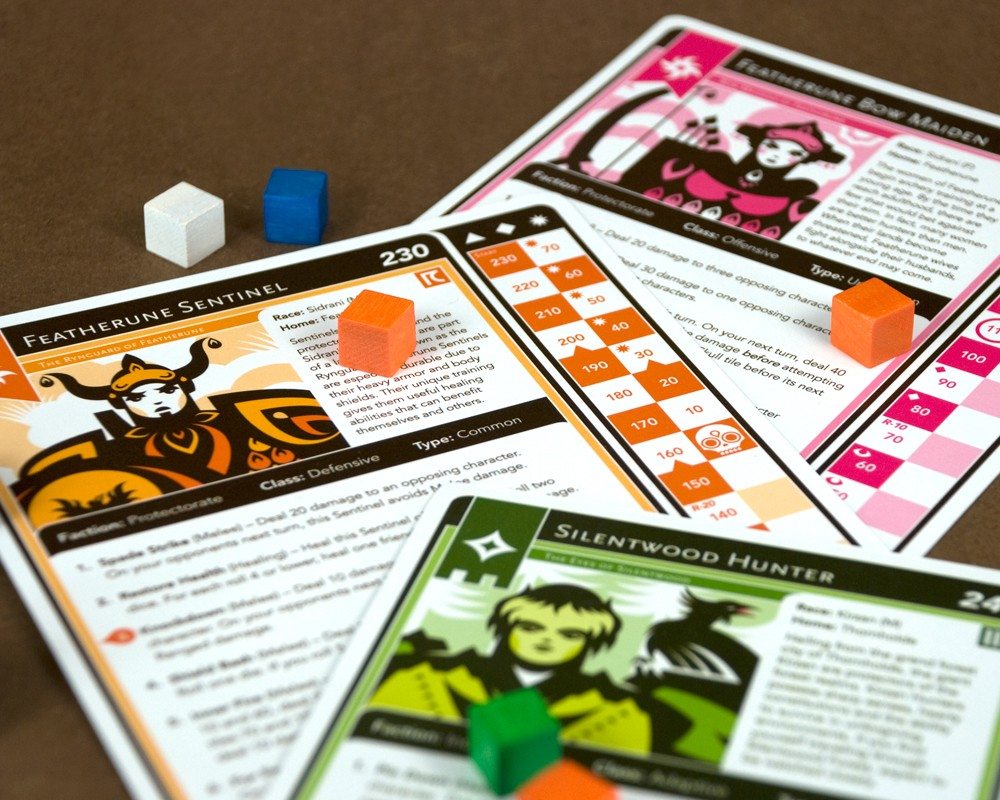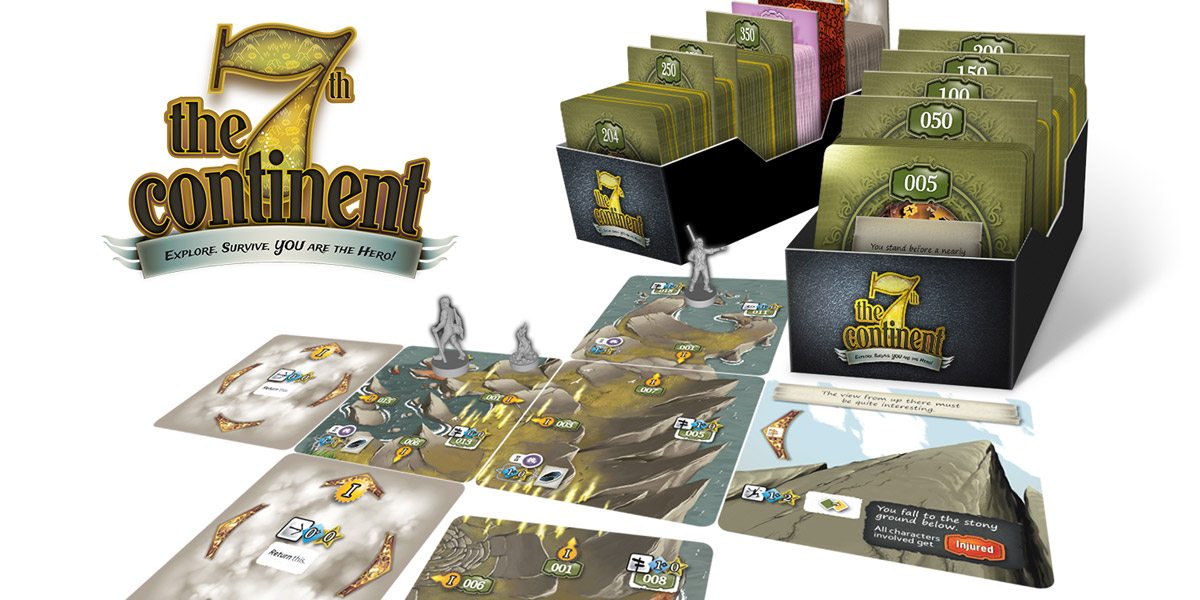
When I first read about Iconica on BrettSpiel, I was immediately struck by the graphic design on the cards, which really looked unlike any of my other board games. (And considering I’ve got upwards of 150 games in my collection, this is saying something.) The norm seems to be hand-drawn illustrations, with a handful of games using photographs and a few that are more abstract diagrams or very simple graphics. Iconica, however, has a graphic style that is clean, cohesive and—quite simply—gorgeous to look at. Eric Torres, the game’s creator, is a Designer and Art Director, and it certainly shows.
Of course, just as you shouldn’t judge a book by its cover, you don’t judge a game by its appearance alone. Glossy cards and brightly-colored wooden cubes are nice, but if the game doesn’t work it’s not going to see much time on the table. So when I finally got the chance to actually sit down and play a few games of Iconica, I was extremely pleased to find that the game has some brains behind that beauty.
I’ll have a chance to speak to Iconica‘s creator, Eric Torres, later this month about the creation of the game and the World of Rynaga where it takes place. For now, I’ll focus on the game itself, with this one small aside: the game Iconica is only a small piece of Torres’ world-building project. Inspired by books he read as a child and artwork from many different cultures, he had the idea to create a world of his own, Rynaga. Currently he has a book, Prelude, available in his Etsy store, with plans to continue the story.
Now, back to the game.
First, what you get: the Starter Set, which sells for $16 (including shipping) comes with six Character Cards, a Quick Reference Card, two standard 6-sided dice, 36 colored wooden cubes used as markers, and the rules. Although it’s sold on Etsy, the cards are professionally printed and are high-quality and durable. They’re about 5″x7″ (compare them to the dice in the photo).
The game takes 30-60 minutes to play, and is for two players. So far it’s taken me closer to an hour but that was working through the rules and reading while playing, so I’m sure once I’m more familiar with the game it’ll go faster.
Each player gets three characters, and the goal of the game is to eliminate the other player. The characters have different Actions available to them, as well as different amounts of starting health. You roll a die, and then select that numbered action from any of your remaining characters. There’s a pretty good variety in the actions: Melee and Ranged attacks, Healing and Support for your own team, and Status actions which can Poison, Stun, Blind or otherwise disable your opponent. Although the die roll introduces chance and randomness to the game, I discovered that the makeup of the team is important. Selecting a bunch of Offensive characters may give you an upper hand for attacks, but leaves you without the ability to recover. It also helps to have characters with different sorts of actions. Some characters are able to negate all Melee attacks for the next round, for instance; if all you have is Melee attacks, that could really put a dent in your options. There’s a mix of flavor text and actual gameplay in the Action section of the character card. I liked the creative names, but it does make for a lot of reading, especially when you first start off the game.
One interesting aspect of the health meter is the presence of “nullifiers.” Depending on your character’s health, various nullifiers come into play, like the Antidote which protects you from Poison or Evasion that prevents Stun. There are also a couple spaces marked Reaction which allow you to immediately deal damage back to the attacker, or Parry squares that let you bounce back a little. And if your character is eliminated, all is not lost—you have one chance to do a Final Act, which can be quite a game-changer. Some characters have the ability to come back to life (with a limited amount of health); others go out in a blaze of glory, dealing massive damage to the enemy as they die.

The mix of characters is excellent, definitely influenced by traditional fantasy but with its own twists. Torres is also planning to release more cards over time (six additional cards are already available now), expanding the world of Rynaga and adding to the variety. Torres has also mentioned that he is working on rules for variants, including a 4-player variation which I’d really love to try. I could see this as a two-team battle, or possibly a free-for-all with shifting alliances.
If you like turn-based strategy and want to see a game that really looks and feels different from typical card games, check out Iconica. I can’t overemphasize how impressed I am with the quality of the game, both the appearance and the actual gameplay, and I’m looking forward to see what Torres does next. What’s especially awe-inspiring is that this is basically a one-man show, Torres’ very own passion project that he does on his own time. If we were all this creative on the side, the world would be a much different place.
Related links:
Check out Rynaga’s Flickr Photostream for some more photos of the game and book.
Eric Torres’ Rynaga blog has a lot more about the game and the World of Rynaga.
Buy the game (and the book) from Etsy.
Images from Eric Torres, used with permission. I requested a copy of the game for review purposes, which Torres graciously provided.


